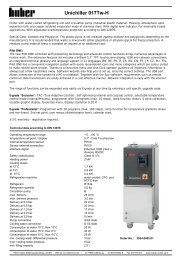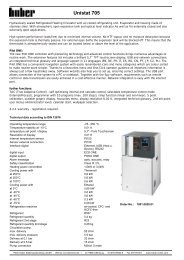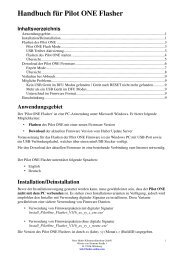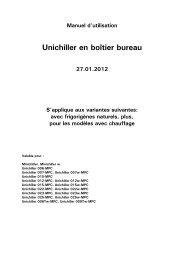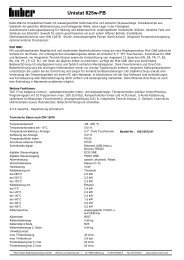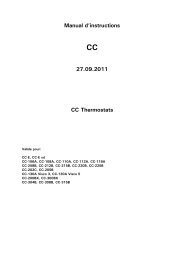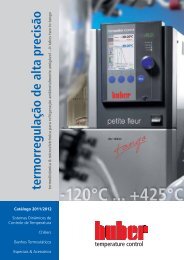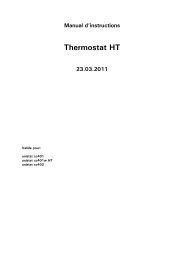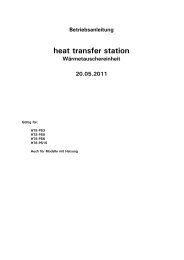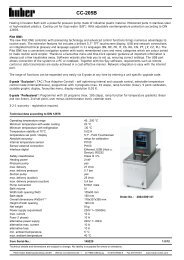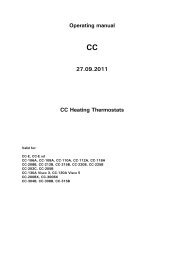Unichiller in Desktop Housing - HUBER
Unichiller in Desktop Housing - HUBER
Unichiller in Desktop Housing - HUBER
Create successful ePaper yourself
Turn your PDF publications into a flip-book with our unique Google optimized e-Paper software.
Thermofluids<br />
We recommend the thermal fluid shown <strong>in</strong> our catalogue. The name of a thermal fluid is<br />
derived from the work<strong>in</strong>g temperature range and the viscosity at 25 °C.<br />
Examples of thermal fluids <strong>in</strong> our catalogue:<br />
M40.165.10:<br />
� Lower work<strong>in</strong>g limit -40 °C<br />
� Upper work<strong>in</strong>g limit 165 °C<br />
� Viscosity at 25 °C: 10 mm 2 /s<br />
The data sheet for the thermal fluid used is of utmost importance, and must be read<br />
before use. This data sheet should be followed.<br />
� Please note the classification of your mach<strong>in</strong>e accord<strong>in</strong>g to DIN 12876<br />
� The chosen thermal fluid must be compatible with sta<strong>in</strong>less steel 1.4301 (V2A)<br />
and FKM!<br />
� The maximum viscosity of the thermal fluid may not exceed 50 mm²/s at the<br />
lowest temperature reached!<br />
� The maximum density of the thermal fluid may not exceed 1kg / dm³<br />
� For chillers we recommend as thermal fluid a mixture of water and glycol (a<br />
mixture is recommended that permits a temperature down to -25°C).<br />
Information on water quality can be found on our website (www.huberonl<strong>in</strong>e.com)<br />
under "Download / Safety data sheets thermofluids / Characteristics<br />
of water".<br />
13



